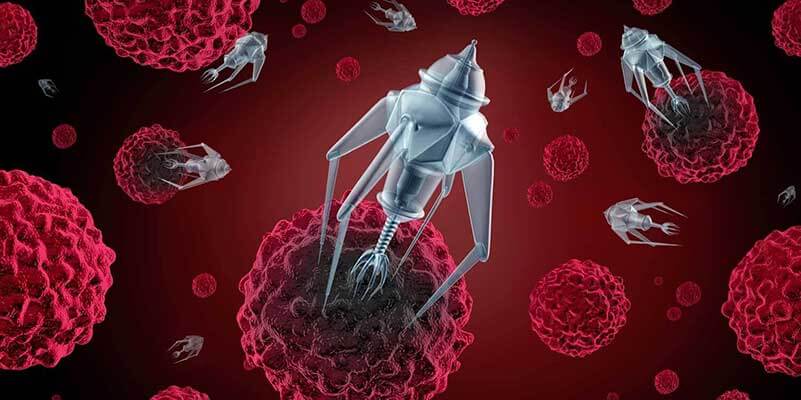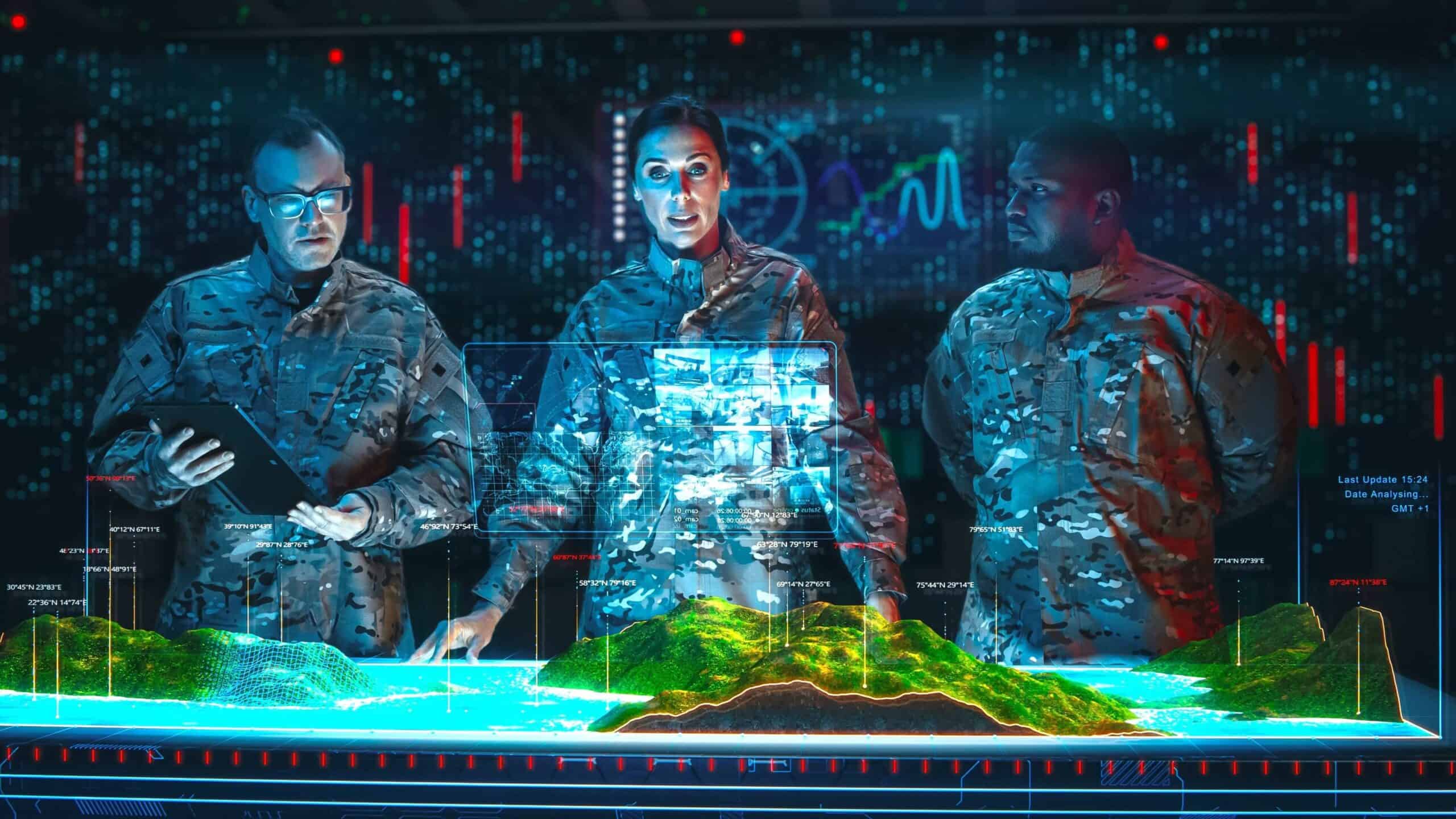We have many interesting ways to fight terrorism. Some of these techniques are currently in development while others are already being used on a small scale. Below is an overview of the technologies that can be deployed by investigative organisations to protect the world from terrorism.
- Robots
- Cameras which detect explosives
- Electromagnetic weapons
- Nanotechnology
- Virtual reality
Robots
Towards the end of 2014, the US Defence Force commissioned ‘PackBot’; a robot used to locate and defuse bombs. Like a computer or my Tesla, the robot receives continuous updates and eventually it will be able to operate completely independently. Developments are slow but it’s expected that ‘PackBot’ will eventually be able to carry out complicated tasks without human assistance. Think of bomb and terrorist detection and declaring areas safe.
Video credits: AiirSource
The future smart city where everything is connected; streetlights, cameras, sensors and bus shelters, can serve as data sources which the ‘PackBot’, combined with its own data, can use to base decisions on. In the not too distant future we’ll see swarms of little insect robots with cameras and on-board intelligence for the purpose of recognition and elimination. The movie ‘Robocop’ gave us a peek into the future of a world we never thought could exist. Russia, America and Japan are busy developing autonomous robots that will be able to free hostages and eliminate terrorists. These robots are equipped with biometric recognition and linked to data sources which provide location information, image data and identification of terrorists and their whereabouts. By the time all of this is implemented, the terrorist of the future and his Kalashnikov will be rendered pretty much helpless – unless he sends his own robot to battle our future ‘Robocop’.
Related lecture: Trends! On to 2030
Cameras which detect explosives
Detecting explosives is complicated. Up until now we’ve been using our common sense as well as dogs and infrared cameras. The company CombiMatrix has developed a ‘sniffer’ camera which can detect the DNA of explosives and another American firm, HiEnergy Technologies, has developed a detector which can find and identify explosives within 15 seconds to 3 minutes. A few American airports have already ordered some of these detectors which cost $ 300,000 each. In the future it will be possible to detect explosives at a greater distance by installing ‘loops’ round airports and military areas. This technology could soon be integrated in smoke detectors, streetlights and bus shelters. The technology can also be installed as a standard feature in self-driving cars, buses and trucks which will allow for large areas to be secured. The technology is already there. Now we need finalise the development and put it to work.
At the airport in Estonia, country of the e-citizen, I was recently thoroughly and unexpectedly searched. Security personnel used a type of strip which they swiped across my suitcase and along its edges. The strip was inserted in to a machine, after which a green light indicated I was clear. My suitcase was checked for explosive materials and this was possible because Estonia had invested in the necessary technology. It was a reassuring experience, something I don’t come across at many other airports. The lack of this type of technology is exactly what allows terrorists free reign when it comes to transporting explosives.
Electromagnetic weapons
In order to intercept unwanted flying objects we use laser systems located on the ground or on satellites to unleash beams on missiles, rockets, drones and other unwanted flying objects. The objective of today’s terrorist is to disrupt the equilibrium of society and cause chaos. Not only do they accomplish this by targeting densely populated areas like we saw in Paris; they also aim to disable nodal infrastructures in cities or even countries. Think airports, energy supply, Internet hubs and transport systems.
Israel has indicated that it is finalising the development of a system which uses laser technology to take down flying objects; the system could stop or counteract 90% of all attacks. The US government is finalising a similar system but there is little information about the developments. The bottom line is: pilots getting close to the White House are being warned. The capitol will beam red and green lasers into the cockpits, allowing pilots to change course and preventing them from entering Washington’s restricted airspace.
Nanotechnology
A development that excites and scares us at the same time is nanotechnology. In the not too distant future, we will be able to produce ultra-small ‘bugs’ the size of one-tenth of a hair. These can be painlessly inserted into our bloodstream to, among other things, attack the molecular structure of cancer cells and viruses. They are also capable of slowing the aging process and repairing the ozone layer. This technology enables us to create ultra-small sensors that can hang, lie or fly; an excellent way to map the environment and activate security services if needed. There is a downside to this technology however, as it also creates opportunities for terrorism. Imagine 100 flying robot insects injecting you with massive amounts of invisible needles. This could be quite catastrophic. Over time, however, producing and smuggling these invisible monsters will become easier and cheaper.

Virtual reality
Special units tasked with the elimination of terrorists need to continuously adapt to changing circumstances. But how do you train for a hostage-situation in which chemicals are used? Military drills to take out a terrorist remotely hijacking a plane will be nearly impossible. And how would you practice 20 different hostage scenarios in a shopping mall or train for the deployment of smart drones, satellites, smart data and helicopters?
There are countless situations that you simply can’t practice for. Additionally, the next few years will see the development of many technologies that are not immediately available to all units across the world. When it comes to the fight against terrorism, the gaming industry is a great source of inspiration. New virtual reality systems such as Microsoft’s HoloLens or the Oculus Rift can conjure up countless possible scenarios in a 3D environment which are nearly indistinguishable from real life. Hundreds of participants from countries all over the world can participate in these training sessions. Individual and team performance can be monitored and, based on the results, individual agents can get additional training. Six European countries have already started with the implementation of AUGGMED (Automated Serious Game Scenario Generator for mixed reality training).
Where are the opportunities for terrorists?
A terrorist who is ready for the future is digitally active. It’s no secret that IS is very well organised; digitally and otherwise. IS terrorists are very knowledgeable when it comes to the latest developments and they are therefore able to cause so much digital damage that our physical world can get into serious trouble. Firstly, it is reasonable to assume that the terrorist of the future already knows about each and every one of the aforementioned technologies. I will also discuss some ‘weapons’ that deserve our attention.
- Internet enables undetectable communication between terrorists
- DNA weapons
- Internet of Things hacks
- 3D printers print weapons
The Internet enables undetectable communication between terrorists
The Internet has many advantages; it enables us to communicate freely and at high speed – think WhatsApp and Skype, for instance. However, the many platforms on the Internet also promote terrorism and extremism and it allows us to encrypt information so that the recipient can only read the message with a digital key. Terrorists use smart encryption methods that are difficult to hack, not only when communicating via email and the abovementioned platforms but also via YouTube, Instagram and Snapchat.
Then there’s the so-called ‘Deep Web’; the Internet which Google is unable to index and which is only visible with special browsers and digital keys. The ‘Deep Web’ (or Darknet) is a mecca and breeding ground for child pornography, drug trafficking and other things which do not bear the light of day. The Deep Web is an estimated 500 times larger than the official World Wide Web. As most of this Darknet is freely accessible, terrorists also use it to communicate about attacks, logistics, meetings and ‘recruitments’ – without being detected. If terrorists were to spread this information via ‘normal’ websites, they would run the risk of the platforms being taken down and intelligence agencies would also be able to trace them more easily.

The numerous Jihadi web forums are frequently visited and used by keen Jihadis. Research shows that 2 out of 10,000 visitors of such forums are prepared to become suicide bombers. Other studies indicate that the longer people partake in these online communities, the more aggressive their conversations and utterances become. These forums are dangerous breeding grounds for extremist views and terrorism. It is therefore imperative that cyber investigation focuses on finding these groups on the Deep Web – that they are digitally shut down and that important ‘pawns’ are apprehended. However, a complete digital shutdown of these groups is wishful thinking as new Jihadi forums are easily set up and continued on the Deep Web. Smart digital techniques will inform the forum members of the new address where they can continue their communication. It’s a cat-and-mouse game, where the smarter Jihadi ‘cat’ wins… for now.
DNA weapons
We’ve feared biological weapons for years. Scientists are able to develop viruses and terrorists can use these to contaminate our drinking water. Because we have the knowledge and ability to manipulate DNA, synthetic biology will lead to new forms of terrorism. Let’s take the Arctic Apple, for instance. It has been genetically engineered to prevent browning after taking a bite. It’s an impressive development for global food supply but this technology can also be applied in other ways. Viruses and bacteria can initiate a chemical process that sends signals to the brain to cause people to exhibit specific types of behaviour. In today’s science, human cells are considered living computers. The DNA is the programming language that hosts commands which can be activated remotely. It is not all doom and gloom though. Many well-meaning scientists from several universities as well as NASA are working on the development of the next step in this technology. In addition, DNA manipulation offers considerable opportunities for the improvement of health and life expectancy. But again, in the wrong hands this technology can also cause disaster.
See also: Digital warfare – terrorism of the future – part 3




